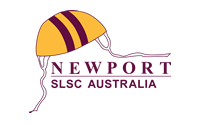News
August 15th, Lest we Forget
by Michael King, Life Member & Club Historian
August 15th marked the seventy fifth anniversary of VJ Day, Victory over Japan and the end of nearly six years of war, fear, separation, disruption and loss.
In 1940, of the thirty three active Newport SLSC members, twenty eight had enlisted in the army, navy or air force. By war’s end seventy members had enlisted, seven did not return. The truly global reach of the conflict reflected in their final resting places; Syria, Holland, Burma, Thursday Island and lost at sea in the Gulf of Mexico and the Java Sea.
The war came to Sydney on 31st May, 1942 when two Japanese midget submarines entered the harbour, one firing its torpedoes. Twenty one young Australian sailors died. A week later another Japanese submarine surfaced and fired ten rounds, aiming at the Harbour Bridge. They all fell short, landing around Rose Bay. Fortunately only one exploded, the others damaged buildings and eastern suburbs real estate prices plunged.
From early 1942, most beaches in Sydney were covered with barbed wire and concrete ‘dragons teeth’ tank traps. A deep ditch filled with these ‘teeth’ ran from Bungan to Pittwater, just north of Phillip Rd to stop (or at least slow down) enemy tanks and transports. A timber bridge allowed access to the peninsular. Newport was the first beach north without these defences, so the public could easily access the beach. During this time the club maintained patrols with older and younger members, numbers dropping to only sixteen in late 1942. There was also one mention of training the Ladies surf club in resuscitation and rescue techniques, but nothing later to confirm if this happened.
One of our members who enlisted in 1940 was surfboat captain, Roy Cane. Roy grew up in Chatswood, did his Bronze medallion at Nth Bondi and was the paid lifeguard at Newport for a few years before the war. He was an impressive big bloke and received a bravery award from the Royal Shipwreck and Humane Society of NSW for rescuing two swimmers at Ballina in December 1935. In 1938 Robin Cale took the iconic photo of Roy on the beach with the Newport standard. Roy became a sergeant in the 2/19th Battalion and soon found himself in pre-war Singapore, training in Malaya for the impending conflict, but also competing for his battalion in the inter-forces swimming and water polo competitions.

In January 1942 British, Australian and Indian forces were being pushed down the Malay Peninsula by the Japanese. Roy’s 2/19th, the Australian 2/29th and the 45th Indian Brigade were in constant contact with the enemy over four days in a fighting withdrawal. After running out of ammunition the survivors had to leave their wounded and head through the jungle to allied lines. Of over three thousand men in those three units at the start of January, only five hundred made it back to Singapore. The depleted 2/19th then faced the initial landings on the northwest of the island on the 8th February and after heavy fighting the Australian units had to withdraw. Eventually on the 15th February, Singapore surrendered and Roy and eighty five thousand other Allied men and women were POWs.
Roy survived his time in Changi and elsewhere, no doubt witnessing unspeakable horrors. He returned to Australia in late 1945 and didn’t rejoin the surf club. He never married and died in 1964, aged 51.
At the AGM in 1944, twenty members attended and the interim committee that ran the club for three years was dissolved and a full committee reinstated. Young members joined, guided and trained by a sprinkling of returning servicemen and the club continued to grow through the forties. We can only be thankful for those thousands of surf life savers and young men and women around Australia who volunteered to defend Australia and remember all their sacrifices. Next time you walk past the Honour Board in the hall have a look at their names, they are worth remembering.
Finally on August 15th it was all over, for some though, it never ended.
Newport members killed in WW2.
[unordered_list style=”bullet”]- Wallace Birrell
- Viv Birrell
- D. Griffiths
- Sydney Porter
- Ian Osborne
- Walter Sadgrove
- John Stringer

Squatting in the front row, third from right is Sir (then Captain) Adrian Curlewis, Palm Beach SLSC and longtime President of Surf Life Saving Australia.



